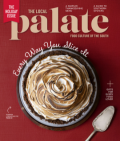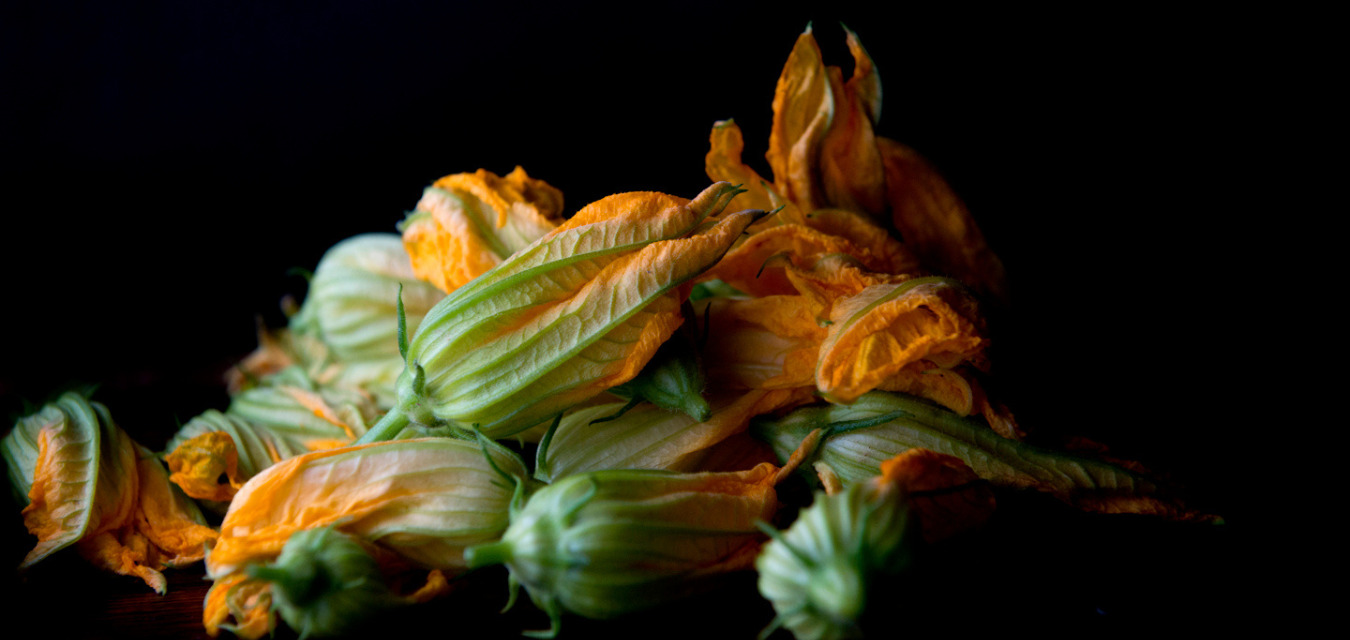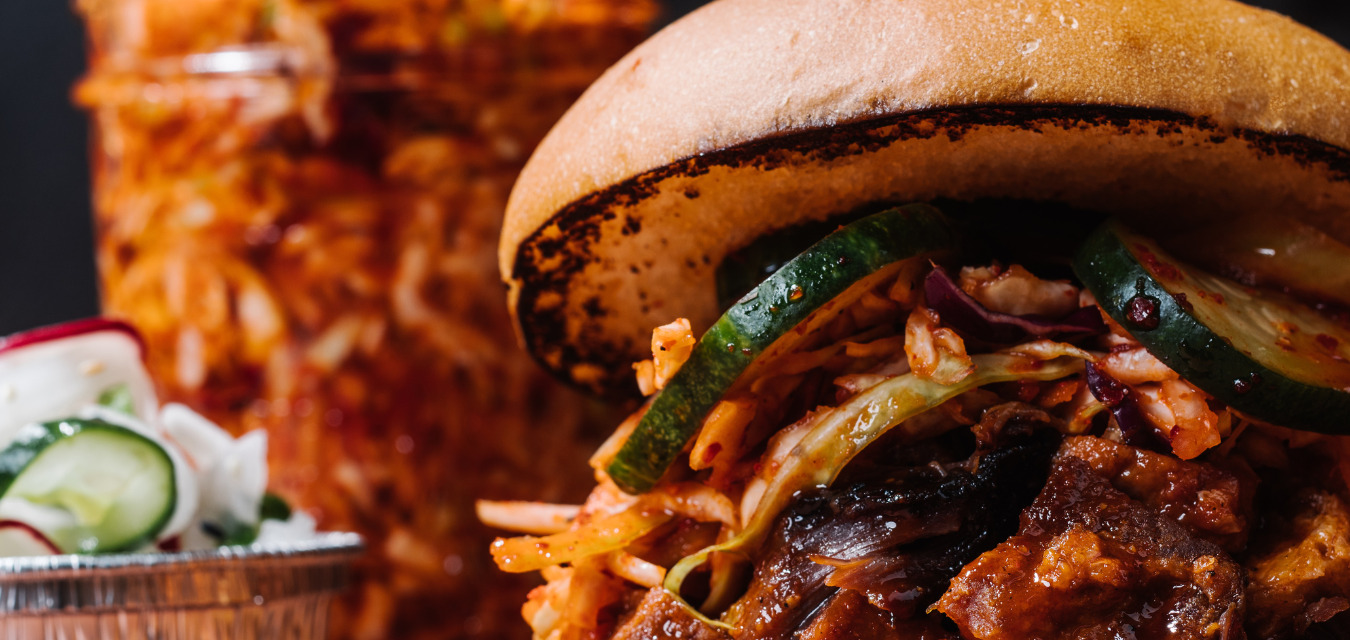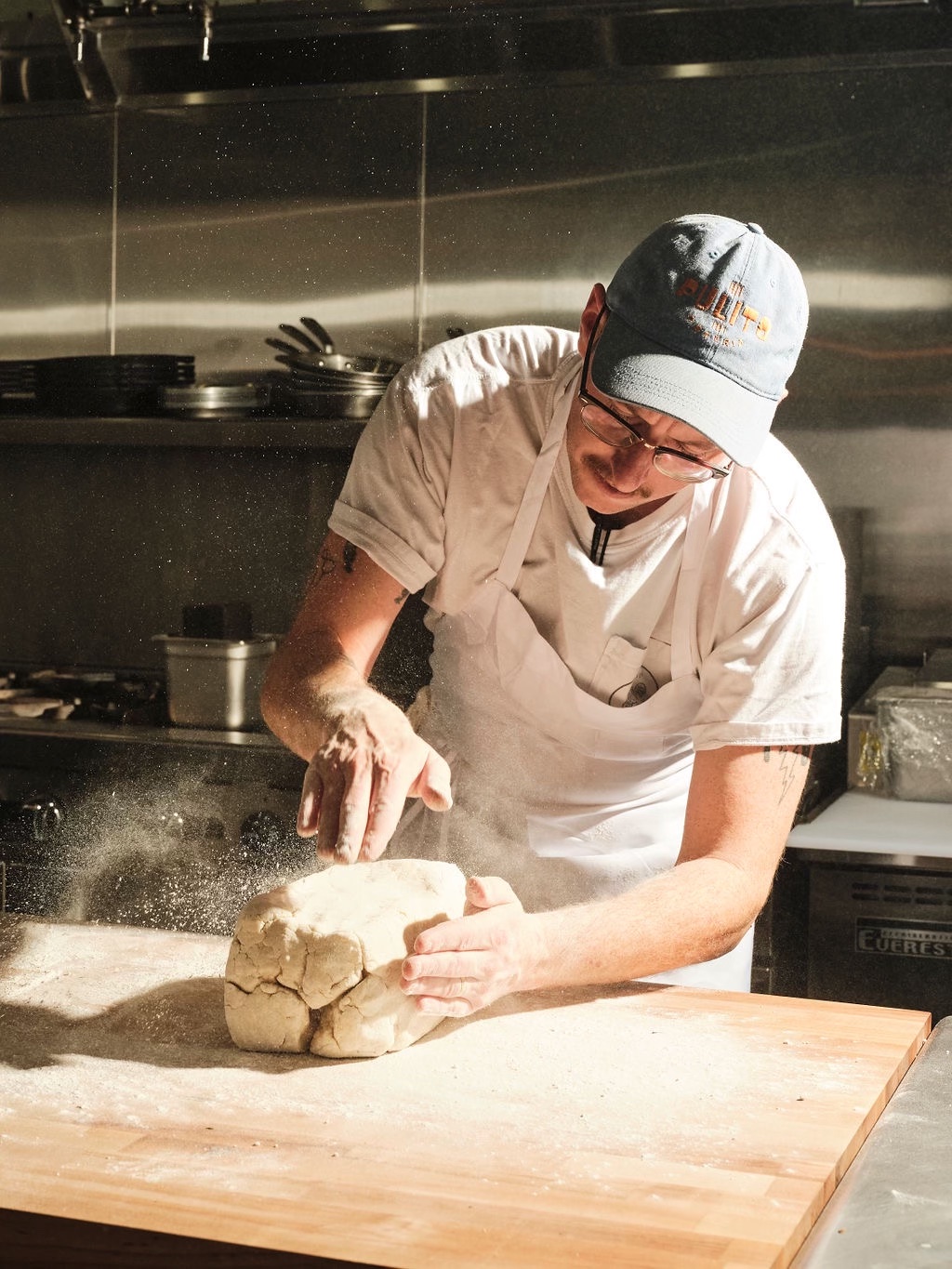
Blending Italian n’duja sausage and Southern shellfish for a winning combo
Executive chef Chaz Lindsay opened his first restaurant, Pulito Osteria, earlier this year in his hometown of Jackson, Mississippi. After graduating from the Culinary Institute of America, Lindsay cheffed at award-winning restaurants including Colicchio & Sons and West Madison Park in New York City, and then moved to Italy to work in a restaurant north of Rome.
He always knew if he was going to open his own restaurant, it was going to be in his hometown. “When I moved back, everybody expected me to do Italian food,” he says. “But I knew it needed to play into Southern tendencies and things people were familiar with.”
While in Italy, Lindsay was drawn to Calabrian-style cuisine because of its emphasis on spice. He fell in love with n’duja, a spicy and spreadable fermented sausage from the region that makes use of the Calabrian chile, and looked for ways to incorporate it on his menu. “I put it on pizza and people didn’t like it because it was too spicy,” he says. “I have this beautiful wood-fired oven; we do pizzas but it’s really not our focus. We try to utilize the oven as much as we can outside of pizza.” Inspired by the pairing of butter and bacon with charbroiled oysters, a locally popular dish, Lindsay says, “We mellowed [n’duja] out with butter and then put it on the oysters, and people went crazy for it.”
Because it’s fermented and has a hint of sourness, n’duja pairs well with oysters in the same way that lemon does. Combined with the richness of the pork and the spice of the chiles, Lindsay says, “it hits all the notes on the palate.”
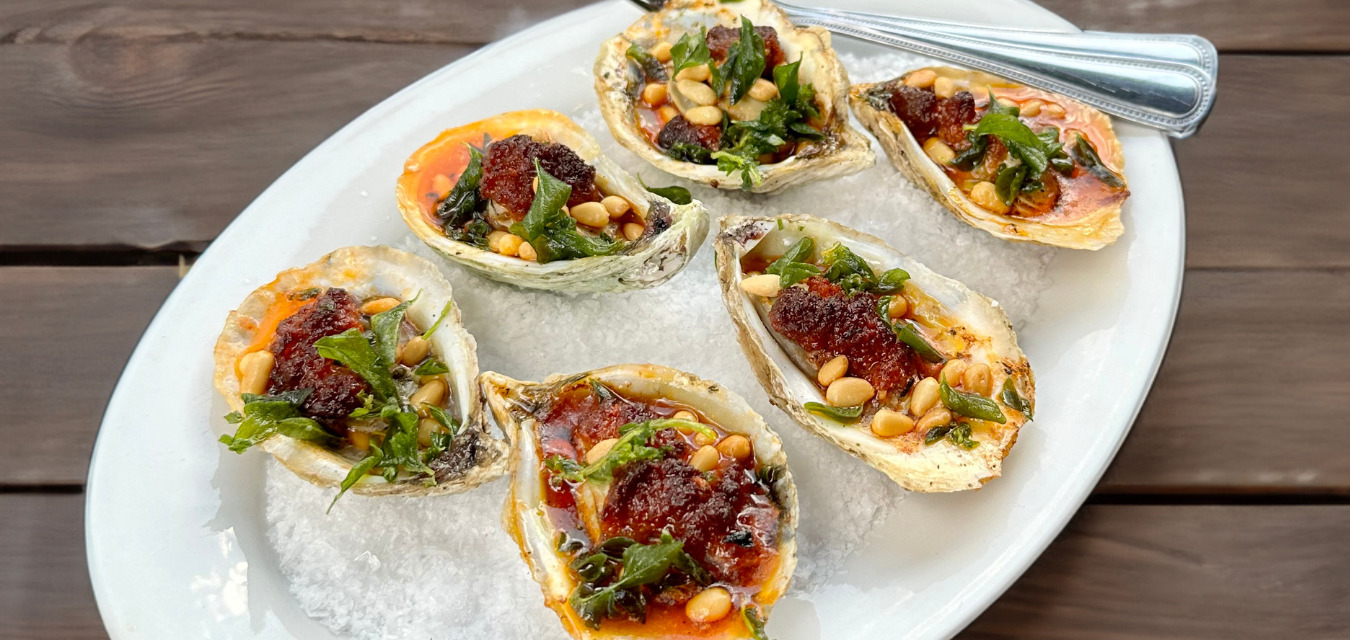
Roasted Oysters with N’duja Butter 
yields
Serves 2
3 ounces n’duja (Lindsay prefers Smoking Goose brand)
6 tablespoons butter
1 tablespoon fresh lemon juice
1 teaspoon salt, plus more for seasoning
Rock salt for sheet pan (optional)
6 Gulf oysters (Lindsay prefers Murder Points)
1 cup canola oil for frying
2 ounces pine nuts
2 fresh oregano stems
Special equipment: Deep-fry thermometer
ingredients
steps
- In a small mixing bowl, place n’duja and butter. Season with lemon juice and salt. Cover with plastic wrap. Place in warm part of kitchen and allow to come to room temperature.
- Fill small sheet pan with bed of rock salt or line with aluminum foil. Shuck oysters. Place on sheet pan.
- Line plate with paper towels. In a small pot, heat canola oil until it reaches 325 degrees on a deep-fry thermometer. Fry pine nuts until golden brown; use slotted spoon and transfer to paper-towel lined plate. Season with salt.
- Add oregano to same oil. Fry until leaves become dark green and translucent; make sure they are no longer “popping” (this means moisture is gone and will make them crisp). Add to paper-towel-lined plate, season with salt.
- Preheat oven to broil or grill to high. With rubber spatula, fold together room-temperature n’duja and butter until smooth. Place 1 ounce of mixture on each oyster. Broil or grill until n’duja mixture has slightly caramelized and oysters are bubbling. Use tongs to remove from heat, and place onto serving dish. Garnish with fried pine nuts and fried oregano leaves.
keep reading
Key Ingredient
Key Ingredient: Squash Blossoms
An elusive summertime luxury, squash blossoms offer colorful, crunchy, sweet, and delectable bites to a range of summer dishes.
Key Ingredient
Key Ingredient: No Small Peanuts
Tyler Brown enhances the flavor and texture of famous blister-fried peanuts by Hubs Peanuts, created by Dot Hubbard, celebrating 70 years.
Key Ingredient
Key Ingredient: Barbecue Pickled Cabbage
According to this seasoned Columbia chef, pickling is for rebels, and this barbecue pickled cabbage might just be your next sandwich staple.
share
keep reading
-
12 Recipes for a Vegetarian Thanksgiving
by Emilee Calametti -
A Simpler Thanksgiving
by TLP Editors -
Halloween Recipe Round-Up
by TLP Editors -
The Swordfish Sea Change
by Emily Havener -
The Harvest: Apple Recipe Round-Up
by Brianna Connelly
